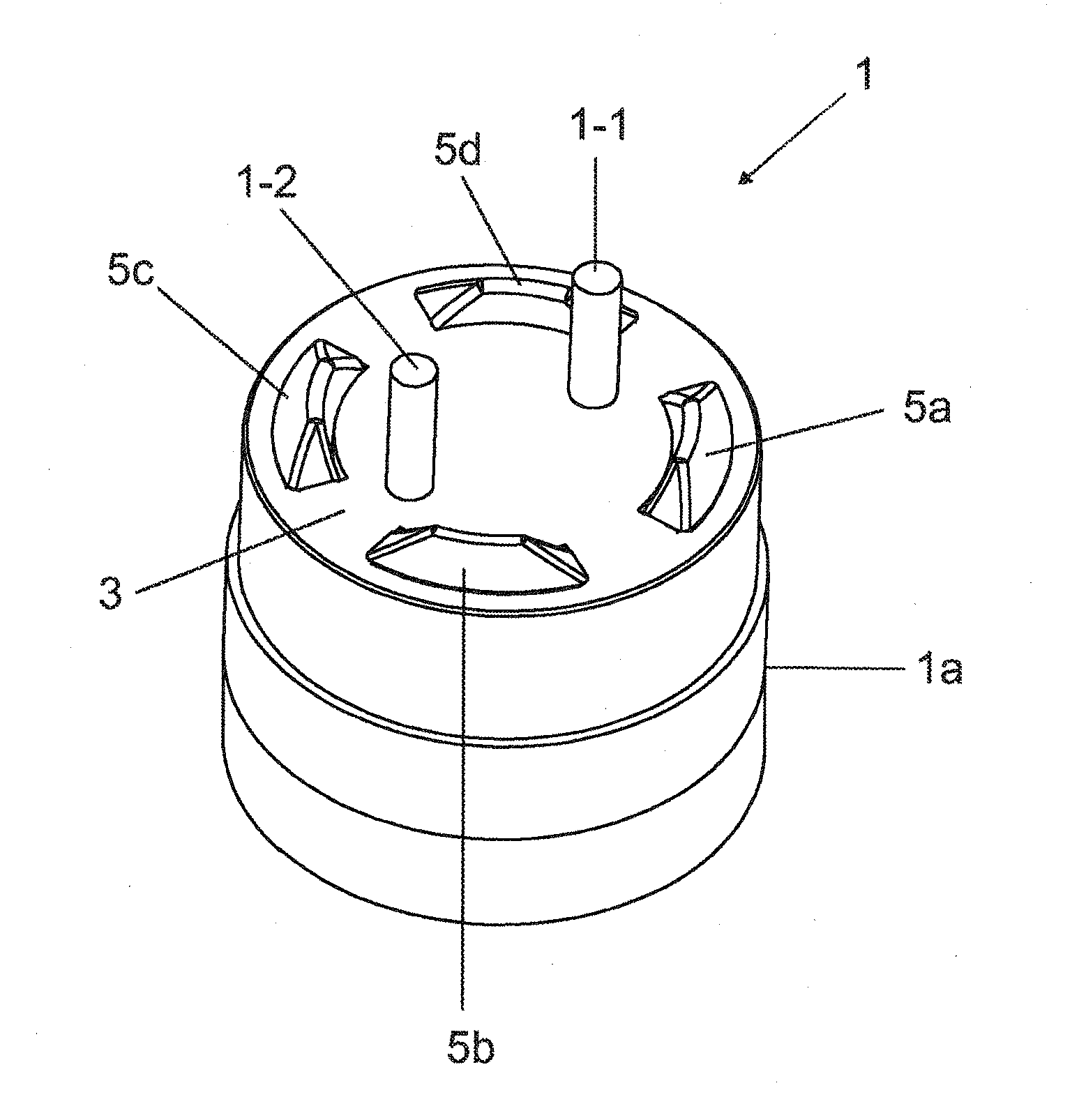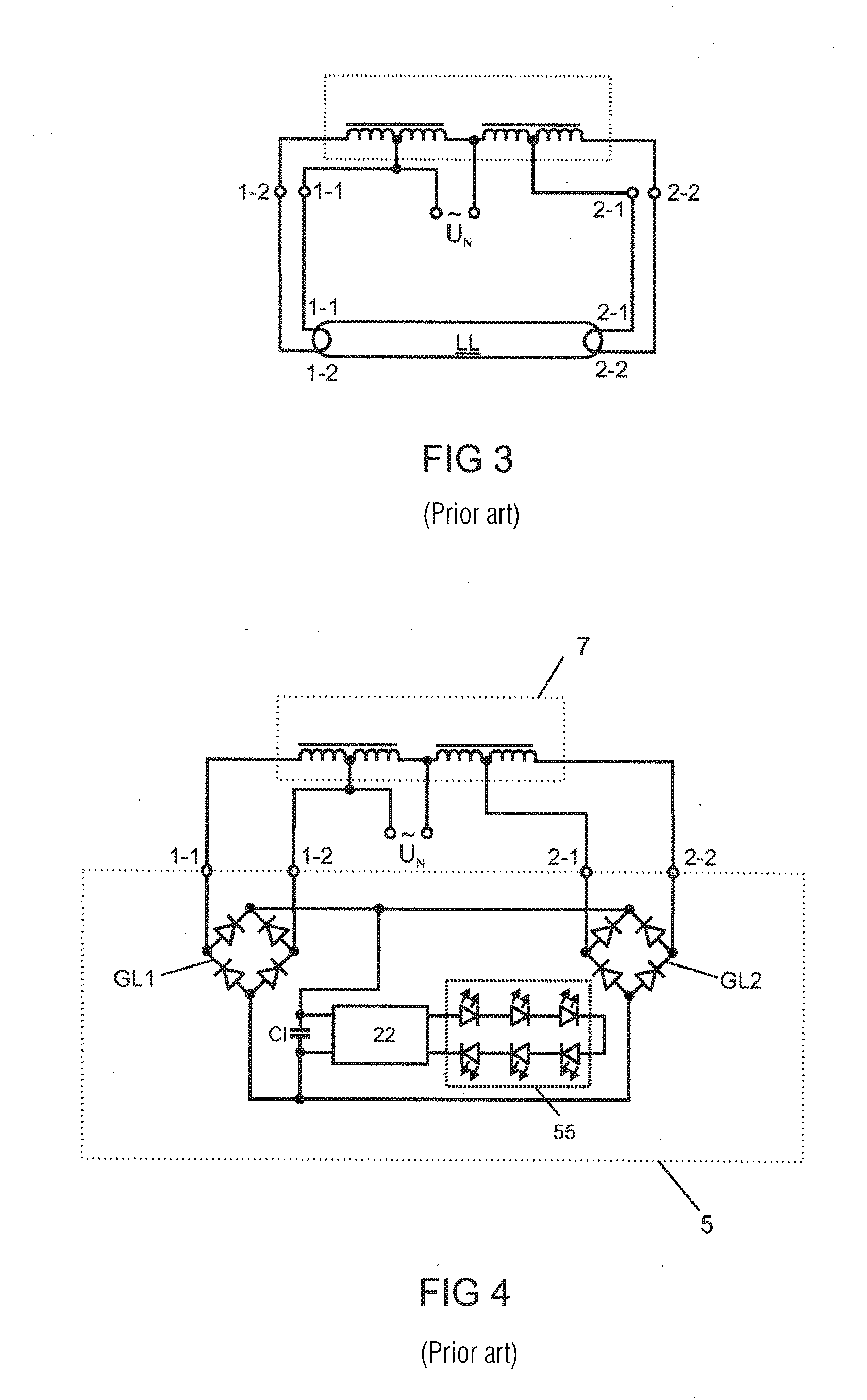Lamp and end cap for a lamp
a technology of end caps and lamps, which is applied in the field of lamps, can solve the problems of a significant hazard for the operator, a diode failure, and a risk to the person wishing to fit a lamp of such a kind into the holder, and achieve the effects of enhancing operating safety, avoiding risk, and enhancing safety
- Summary
- Abstract
- Description
- Claims
- Application Information
AI Technical Summary
Benefits of technology
Problems solved by technology
Method used
Image
Examples
first embodiment
[0039]FIGS. 5, 6, and 7a-7d show an end cap 1 variant of the invention. End cap 1 can alternatively be referred to also as a base. End cap 1 has a substantially cylindrical housing section 1a with a circular end face / front face 3 from which two pins 1-1, 1-2 project axially. Housing section 1a can be made of, for example, plastic. The pins can alternatively be referred to as contact pins. Also projecting axially from front face 3 are four sensing elements 5a-5d that together form a sensing unit and which can be made of, for example, plastic. A correspondingly shaped opening is formed in front face 3 for each sensing element 5a-5d. Pins 1-1, 1-2 project further than sensing elements 5a-5d. Sensing elements 5a-5d all project equally. If the front face is divided into four 90° sectors (as indicated in FIG. 5 by the two dashed lines), then there will be a sensing element in each 90° sector. For example each sensing element is located centrally in its sector in the circumferential direc...
third embodiment
[0074]Arranged furthermore on the top side of plate 1c one behind the other in the circumferential direction are five radially inner electrically conductive sub-segments (not shown) that form a radially inner current path. The electrically conductive inner sub-segments can, for example, be accommodated in an inner circumferential slot (not shown). The inner sub-segments are arranged in exactly the same way as outer sub-segments 31a-31d, which is to say mutually overlapping with an axial spacing and having upwardly bent ring-arc segments in the overlapping region. As in the third embodiment variant, in each case one radially inner sub-segment and one radially outer sub-segment form a pair of sub-segments that are adjacent in the radial direction and the inner sub-segment and outer sub-segment of each pair extend substantially over the same angular range. When sensors 5a-5d are pushed axially downward, they push simultaneously axially against in each case an inner and an outer overlap...
PUM
 Login to View More
Login to View More Abstract
Description
Claims
Application Information
 Login to View More
Login to View More - R&D
- Intellectual Property
- Life Sciences
- Materials
- Tech Scout
- Unparalleled Data Quality
- Higher Quality Content
- 60% Fewer Hallucinations
Browse by: Latest US Patents, China's latest patents, Technical Efficacy Thesaurus, Application Domain, Technology Topic, Popular Technical Reports.
© 2025 PatSnap. All rights reserved.Legal|Privacy policy|Modern Slavery Act Transparency Statement|Sitemap|About US| Contact US: help@patsnap.com



